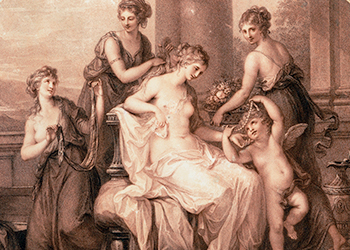Women in the Age of Enlightenment

‘Woman was the governing principle, the directing reason and the commanding voice of the eighteenth century. She was the universal and fatal cause, the origin of events, the source of things.’ These are the words of the Goncourt brothers, in their work The Woman of the Eighteenth Century (1st edition 1862), which, despite exploring the role of the French woman in the Age of Enlightenment, her many aptitudes and capacities as well as her social status, still emphasises coquetterie (gallantry and seduction) as a form of control and assertion. The Goncourts’ modernity, in their critical analysis of the eighteenth century, close both in time and in perception of customs, is at times invaded by misogyny and a more reactionary view of the social changes and mentalities in play prior to the French Revolution.
The female presence is evident in the paintings in the galleries of the Calouste Gulbenkian Museum dedicated to 18th-century France, and we sense it too in the utilitarian space of the furniture, the gold boxes and silverworks. However, the woman revealed is both a user of these spaces and objects and a subject of representation. The works on display in this case demonstrate woman’s role as author and artist, adding further facets to a complex involvement in political, social and cultural life, often carried out through male intervention, but which is asserted and becomes autonomous through the creation of her own specific domain for affirmation, in which participation in literary salons was perhaps one of the greatest achievements.